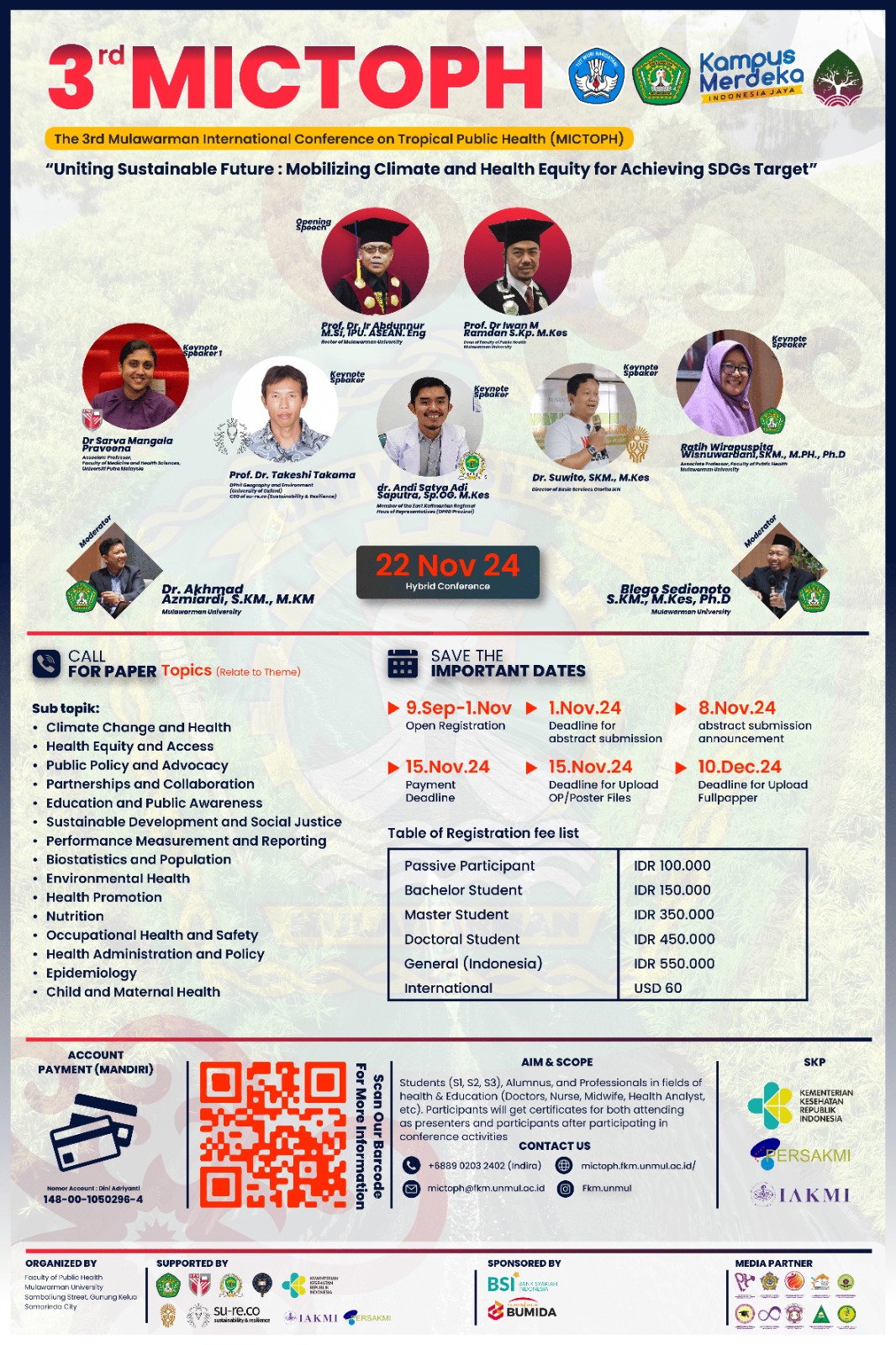Development of Synbiotic Yogurt with Malang Apple and Bantan Banana for CKD Gut Modulation
Keywords:
Yogurt, CKD, Gut dysbiosisAbstract
Background : Chronic Kidney Disease (CKD) is a global health issue with increasing prevalence year by year. In 2023, the prevalence of CKD in Indonesia reached 0.18%, affecting approximately 638,178 individuals. CKD contributes to a high healthcare cost burden due to its complications, including gut dysbiosis, which triggers systemic inflammation and worsens the patient's condition. Changes in gut microbiota play a crucial role in the progression of this disease, with dysbiotic microbiota producing uremic toxins that further deteriorate the health of CKD patients. Managing gut dysbiosis has become one of the approaches that can help improve patient conditions, and the use of probiotics, prebiotics, and synbiotics has been extensively studied as potential therapeutic agents. Objective : This study generally aims to formulate a synbiotic yogurt product based on Malang apple (Malus sylvestris) and Bantan banana (Musa acuminata C.). Specifically, the objectives of this study include: testing the organoleptic and descriptive properties of the synbiotic yogurt product, analyzing the physical and chemical properties of the synbiotic yogurt, and examining the effect of treatments on organoleptic attributes (color, aroma, taste, texture, mouthfeel, aftertaste, and overall) and chemical properties (energy, protein, fat, carbohydrates, moisture, and ash content) of the synbiotic yogurt product. Research Methods/ Implementation Methods : This study was conducted in December 2024 at the Nutrition and Nutraceutical Laboratory, Faculty of Pharmacy, Mulawarman University. The research method involved several stages, starting with the formulation of synbiotic yogurt using a combination of full cream and skim milk, the addition of apple and banana puree, and the addition of probiotic bacterial starter cultures such as Streptococcus thermophilus, Lactobacillus bulgaricus, and Bifidobacterium. Organoleptic testing was conducted to determine the most preferred formula based on color, aroma, taste, texture, mouthfeel, aftertaste, and overall attributes. The selected formula was chosen based on weighted scoring. The effect of treatment interactions (the ratio of full cream and skim milk addition as well as the ratio of sugar and starter addition) on the organoleptic and chemical properties of the synbiotic yogurt product was analyzed using two-way ANOVA (p<0.05). Results : The study showed that formula F5, consisting of a mixture of full cream and skim milk (50%:50%), apple and banana puree (50%), 5% sugar, and 5% starter, was the most preferred formula by the panelists based on organoleptic testing, including color, aroma, consistency, taste, mouthfeel, aftertaste, and overall, compared to other formulas: F1, F2, F3, and F4. Based on physical analysis, F5 had a pH of 4.95±0.01 and a viscosity of 12.74±0.01, indicating a thick texture and a sour taste that meets probiotic yogurt standards. The chemical composition of F5 includes 73.26±12.62 kcal energy, 5.65%±1.56 protein, 2.94%±0.80 fat, 6.06%±0.20 carbohydrates, 85.57% ±0.03 moisture content, and 0.58%±0.01 ash content. Two-way ANOVA analysis results showed an interaction effect of the treatments (p<0.005) on the sensory/organoleptic and chemical properties of the synbiotic yogurt product.Conclusion/Lesson Learned : The synbiotic yogurt formula most preferred by panelists is F5, with an energy content of 73.26±12.62 kcal, 5.65%±1.56 protein, 2.94%±0.80 fat, 6.06%±0.20 carbohydrates, 85.57%±0.03 moisture, and 0.58%±0.01 ash content. The overall physical and chemical properties of the synbiotic yogurt meet the SNI 3820-2015 standard. The results of the two- way ANOVA test indicate an interaction effect of treatments on the sensory and chemical properties of the synbiotic yogurt product. Further research is recommended to conduct preclinical tests with experimental animals to assess the efficacy of the product as a modulator for gut dysbiosis.





